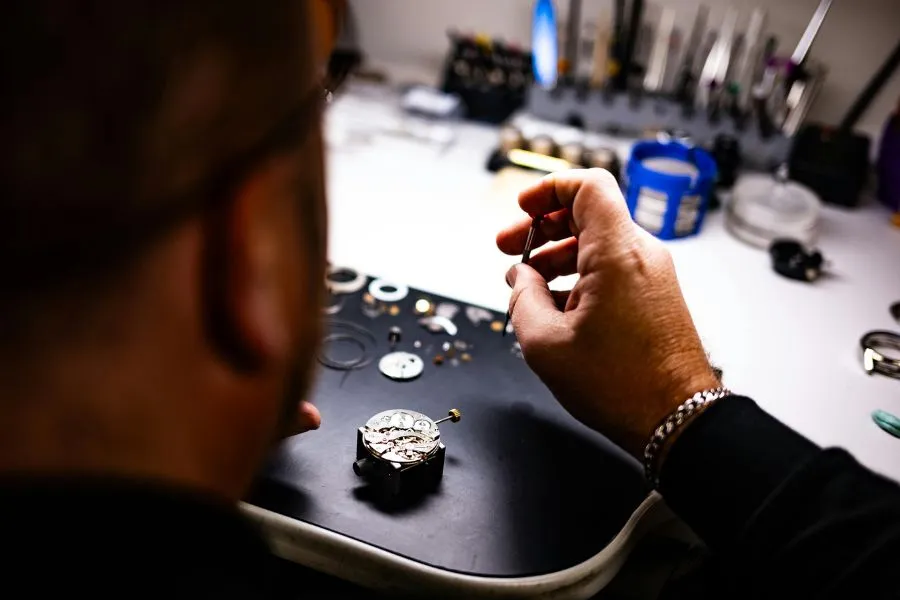You’ve worn your Rolex through countless moments, each glance at its face a reminder of precision and style. But as time evolves, so does your watch. Whether you’re looking to transform its entire appearance, enhance comfort, or simply try something new, changing your Rolex bracelet is a simple yet transformative step. Here’s how you can do it with confidence and care. For those looking to sell your Rolex or keep it in top shape, maintaining the bracelet is just as important as caring for the movement.
At Toronto Watch Exchange (TWX), we know how much a luxury watch means to its owner. We specialize in servicing, buying, and selling Rolex timepieces in Toronto, providing expert advice and trusted care for every Rolex model, from the classic Datejust to the iconic Submariner. Whether you need professional help changing your bracelet or simply want tips on preserving your watch, TWX is here to help. And for those considering an upgrade, we offer seamless options to sell Rolex watches safely and confidently.
Why Change the Bracelet on Your Rolex?
Swapping the bracelet on a Rolex is one of the easiest and most impactful ways to refresh your watch. Whether you want a new look or better comfort, changing the bracelet can give your Rolex an entirely new personality. Here are some top reasons why Rolex owners choose to change their bracelets:
- Customizing the Look: A stainless steel bracelet gives a classic, robust appearance while switching to a leather strap or rubber band can create a fresh, modern style perfect for formal events or casual outings.
- Seasonal Comfort: During hot summer months, lightweight rubber or leather straps offer a breathable, comfortable alternative to heavier metal bracelets.
- Preserving Condition: Over time, scratches and wear can diminish the appearance of a Rolex bracelet. Replacing it ensures your timepiece looks flawless while protecting its long-term value.
- Enhancing Value: Upgrading to an iconic Rolex bracelet style, like the Jubilee, Oyster, or President, enhances both aesthetics and functionality, ensuring your watch stays versatile and stylish.
No matter the Rolex model you own, whether it’s a Submariner, Datejust, Daytona, or GMT-Master II, changing the bracelet follows a similar process. With the right tools and care, you can swap out your bracelet like a pro. Let’s get started!
Tools You Need to Change a Rolex Bracelet
While it’s exciting to personalize your Rolex by changing its bracelet, we always recommend having the process done by a professional. Rolex watches are engineered with meticulous precision, and attempting to change the bracelet yourself could inadvertently damage the case, compromise the water resistance seal, or even scratch the finish. Before starting, gather the correct tools to avoid damaging the watch. Here is a complete list of tools you’ll need:
| Tool | Purpose |
| Spring Bar Tool | To compress and release the spring bars. |
| Microfiber Cloth | To protect the watch and workspace. |
| Rolex Case Back Cushion | To stabilize and protect the watch case. |
| Tweezers | For precise handling of small components. |
| Magnifying Glass or Loupe | To inspect spring bars and alignment. |
| Replacement Bracelet | The new bracelet or strap to install. |
A clean, flat workspace with good lighting is also essential. Working on a microfiber cloth prevents scratches to both the watch and the surface underneath it.
Step-by-Step Guide to Changing a Rolex Bracelet
A professional watchmaker or authorized Rolex service center not only has the specialized tools needed to handle your watch safely but can also inspect the timepiece during the process. This ensures that the seals, gaskets, and overall condition of the watch remain intact, maintaining its water resistance and performance standards. Think of it as a small investment to protect a timeless masterpiece.
Prepare Your Rolex and Workspace
- Lay the microfiber cloth flat on your workspace to provide a clean, cushioned surface.
- Place the Rolex face-down carefully on the cloth, using a Rolex case back cushion if available.
- Ensure you have all tools within reach to make the process seamless.
Locate the Spring Bars
- Flip your Rolex over and locate the bracelet’s connection points at the lugs.
- The bracelet is secured to the watch case using spring bars. These small, spring-loaded rods hold the bracelet ends in place between the lugs.
- You will notice tiny openings near the lugs where the spring bar tool can be inserted.
Release the Spring Bars
- Insert the fine tip of the spring bar tool into the opening at one side of the bracelet.
- Gently apply downward pressure to compress the spring bar.
- As you compress the spring bar, carefully pull the bracelet end away from the lug. You may need to hold the spring bar in a compressed position while maneuvering the bracelet.
- Repeat this process on the other side of the bracelet.
Remove the Bracelet
- Once the spring bars are compressed and released, carefully detach the bracelet from the lugs.
- Set the removed bracelet aside in a safe place to avoid damage or misplacement.
Attach the New Bracelet or Strap
- Align the new bracelet or strap with the watch lugs.
- Insert one end of the spring bar into the first lug hole.
- Use the spring bar tool to compress the other end of the spring bar, then guide it into the opposite lug hole.
- Listen for a soft “click,” which indicates the spring bar is seated securely.
- Repeat the process for the other side of the bracelet.
Check the Bracelet Installation
- Gently tug on the new bracelet to confirm that both spring bars are securely in place.
- Inspect the connection points under good lighting, using a loupe or magnifying glass for precision.
- Ensure the bracelet is aligned evenly with the watch case for a seamless finish.
Tips to Avoid Damage While Changing a Rolex Bracelet
- Always use a spring bar tool with a fine tip designed for luxury watches to avoid scratches.
- Work slowly and carefully, especially when handling the spring bars.
- Avoid excessive force; Rolex lugs can scratch easily.
- If you struggle or feel uncertain, consult a professional watch expert.
Rolex Bracelet Types and Options
Rolex offers a variety of bracelet styles to suit different watch models and preferences:
- Oyster Bracelet: A classic, robust design with flat links, popular on models like the Submariner and Daytona.
- Jubilee Bracelet: A more intricate, five-piece link design, often seen on the Datejust.
- President Bracelet: An iconic, three-piece link bracelet known for its elegance, typically on the Day-Date models.
- Rubber and Leather Straps: Aftermarket options that offer versatility, comfort, and a sporty or formal look.
Each bracelet type complements the watch’s aesthetic while providing unique levels of comfort and durability.
Give Your Rolex the Care It Deserves
Changing the bracelet on your Rolex is a simple way to refresh its look, improve comfort, and preserve its condition. With the right tools and steps, you can confidently handle the process at home while keeping your timepiece in top shape.
If you prefer professional assistance, Toronto Watch Exchange is here to help. From precise bracelet replacements to full inspections and maintenance, we ensure your Rolex stays flawless. At Toronto Watch Exchange, we take pride in offering expert care to keep your luxury watch performing perfectly for years to come.
Explore our services or get in touch today, your Rolex deserves the very best.
Common Questions About Changing Rolex Bracelets
- Can I Change My Rolex Bracelet Myself? Yes, you can. With the right tools, technique, and patience, changing the bracelet at home is manageable. If you’re unsure, however, seeking professional help is wise.
- How Do I Avoid Damaging My Rolex? Use proper tools, work on a soft surface, and apply gentle pressure during the process. Avoid using makeshift tools as they can damage the lugs or case.
- What Happens if I Lose a Spring Bar? Spring bars are replaceable and can be purchased from a professional watch dealer or service center.



